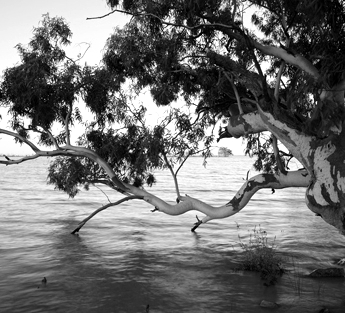CEWH saving for dry times
 The Commonwealth Environmental Water Holder (CEWH) says it is capitalising on recent flood years.
The Commonwealth Environmental Water Holder (CEWH) says it is capitalising on recent flood years.
Over the past year, the Darling-Baaka and Murray rivers have surged to levels unseen in decades, rejuvenating wetlands, floodplains, and forests.
The interconnected rivers of the Murray–Darling Basin have witnessed a resurgence in native fish, like the Golden perch, which have embarked on extensive spawning journeys.
These floods, along with environmental water allocations, have paved the way for a boom in waterbird populations, including Pelicans, Straw-necked Ibis, Royal Spoonbill, and Egrets. The birds have thrived, even in internationally significant Ramsar wetlands across the Murray-Darling Basin.
Furthermore, the high water flows have purged salt from the Murray Mouth and substantially reduced salinity levels in the Coorong, providing a healthier environment for native fish, wetland flora, and fauna.
Dr Simon Banks, the CEWH, says it is important to build on these gains, given the continuous decline in waterbird populations over the past four decades and a 90 per cent decline in native fish populations over the past century.
He has stressed the need for strategic water use to reverse these trends.
In 2023, the CEWH plans to utilise environmental water to ensure wetland habitats remain conducive for shelter and food for young waterbirds.
For native fish, the focus will be on maintaining river flows that stimulate breeding and facilitate movement between rivers, with particular attention to areas previously impacted by poor water quality due to flooding.
Effective water management, according to Dr Banks, involves knowing when not to use environmental water.
Some wetlands, particularly those overrun by carp, will undergo drying phases to counteract the devastating effects of these invasive fish.
The CEWH's Water Management Plan includes options to sell water this year and carry over water into 2024-25 to prepare for the return of warm and dry conditions.
This approach should help in reconnecting rivers, replenishing waterholes, and providing refuge during drought for native fish and waterbirds.
Dr Banks says that their Water Management Plan covers all scenarios, whether wet, dry, or in between, highlighting the necessity for proactive planning.
The funds generated from selling annual water allocations will be reinvested in environmental activities, such as improving fishways or enhancing infrastructure for better outcomes from environmental water use.
Collaborating with state agencies, First Nations communities, scientists, and industry partners, the CEWH says he ensures that local needs are considered in water allocation decisions, backed by scientific data.
More information on the Commonwealth Environmental Water Holder’s annual Water Management Plan is available at: Water Management Plan 2023-24: A summary.








 Print
Print